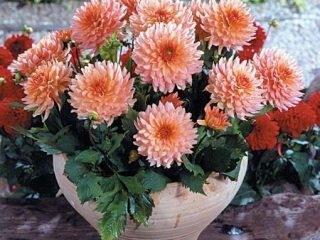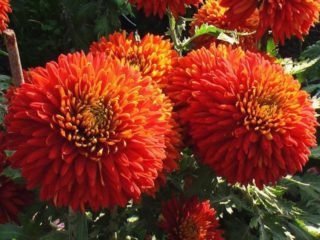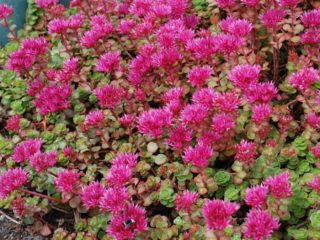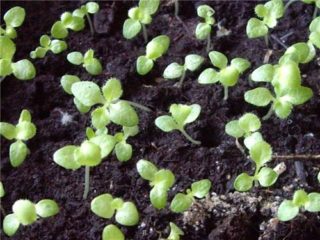Content
Rose Jubilee Celebration is one of the best varieties of the crop. It surpasses other varieties with amazingly beautiful flowering and a pleasant delicate aroma. The plant is not particularly demanding to care for, with a fairly strong immunity and a wide area suitable for cultivation. It can be cultivated in flowerbeds and pots, looks great in bouquets, and can stand cut for a week without losing its characteristics.
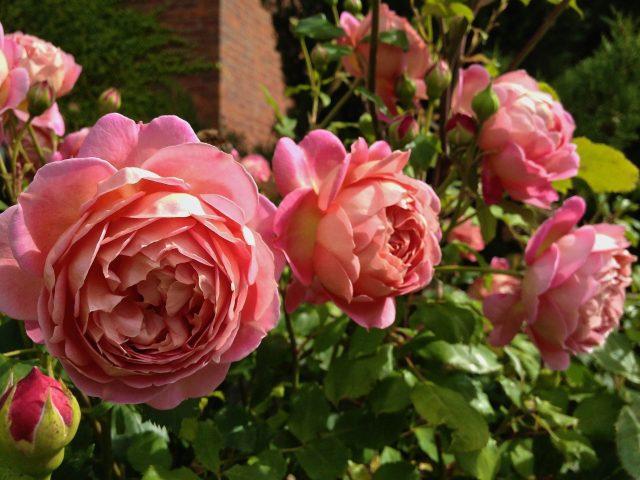
Jubilee Celebration is a quality rose variety that can perform well in non-traditional areas
History of origin
The park rose of the Jubilee Celebration variety was bred 20 years ago in the UK. It belongs to the group of English flowers. The creator of the variety is the famous David Austin.
Description of rose Jubilee Celebration with photo
Jubilee Celebration is a medium-growing scrub of English spray roses. In favorable conditions it grows up to 100-120 cm, the bush is about a meter wide.It is quite spreading, but graceful, at the same time strong and strong, the shoots are straight, plastic, slightly drooping, covered with small dark green leaves with a glossy structure.
With the arrival of summer, the bush is almost completely covered with large, up to 14 cm in diameter, densely double buds, which are collected in 1-3 pieces. in the brush. They have a unique juicy color, their color is coral-pink, on the outside the petals have a golden tint, shining. As Jubilee Celebration flowers bloom in the central part, their tone becomes warmer. The buds themselves are shaped like a deep bowl with a high center, it is dense and well-filled. The petals on the outside gradually become smaller in size towards the center. The inflorescences last 5-10 days, resemble peonies in appearance, and emit a pleasant, pronounced aroma with notes of strawberries, fruits and citruses.
The Jubilee Celebration rose variety is characterized by abundant and long-lasting flowering. The buds bloom about three times per season, the breaks are almost invisible. Every wave they are lush and decrease only with the arrival of autumn. With regular plucking of faded specimens, the budding period lasts from May to October.
Rose Jubilee Celebration prefers to grow in well-sunny areas in slightly acidic soil. It tolerates low temperatures well (winter hardiness zone 6), and successfully winters under cover at temperatures of -25 °C. Excellent for growing in many Russian regions: Leningrad region, Moscow region, Western Siberia, the Urals. In the south of the country it winters without shelter.
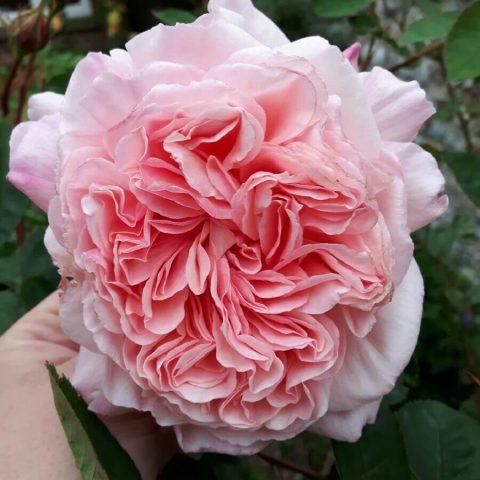
One Jubilee Celebration rose flower can have up to 120 petals.
Advantages and disadvantages
Despite the fact that, according to flower growers, Jubilee Celebration is a rose with very high qualities, it also has a number of disadvantages.
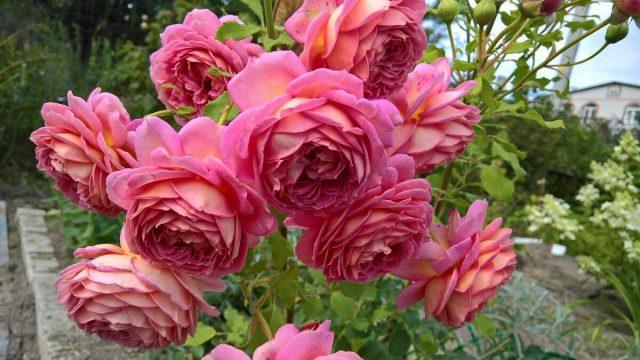
The variety is just gaining popularity among gardeners from Russia.
Advantages:
- abundant and continuous flowering;
- dense petals resistant to high humidity and rain;
- ease of care;
- large size of inflorescences;
- beautiful view of the bushes;
- endurance and strong immunity;
- unique color of buds;
- bright aroma;
- frost resistance.
Flaws:
- drooping thin branches;
- weak shoots in the first years of development;
- slow growth;
- early shedding of flowers;
- shrinkage of buds in hot weather;
- the need for shelter for the winter.
Features of cultivation
The Jubilee Celebration variety is very popular in the United States and Europe, but in Russia it can still not be found so often. Because in order for a plant to reveal itself in all its glory in the local climate, the gardener will have to make a number of efforts and organize careful care for it. The culture loves an even climate and plenty of sunshine. When planting a rose in partial shade, its stems may droop greatly, but despite this, the bush will still delight you with lush flowering.
Before planting a plant in a flowerbed, you need to carefully select its location. The site must be protected from strong winds, the soil is capacious, loose, oily, with a good drainage layer.
When the crop is grown in suitable climatic conditions, it is considered unpretentious and does not require special care; important points are watering, loosening the soil, fertilizing and pruning. In less favorable conditions and when grown in northern regions, better care is needed.
The shrub needs to comply with the following agrotechnical rules:
- Hydration. It is recommended to water the rose in the morning, with warm and soft water, 1-2 times a week (20 liters per bush), depending on the weather. After each procedure, the soil must be loosened.
- Fertilizer. In the spring, as well as at the beginning of summer, the Jubilee Celebration rose needs to be fed, for which use nitrogen-containing fertilizers, as well as phosphorus, potassium and calcium. In the fall, you can apply potassium-phosphorus compounds under the bush.
- Trimming. In the spring, when the first buds swell, Jubilee Celebration is trimmed. All weakened and damaged shoots, as well as old branches, must be removed. During the summer, sanitary pruning is allowed to adjust the shape of the bush and remove faded buds. In the first years, the rose is not pruned and is not allowed to bloom, removing all the buds; only in August only two inflorescences are left on the bush.
- Disease prevention. An integral part of crop care is its regular visual inspection to identify possible ailments, as well as preventive treatments against fungal and bacterial diseases.
- Preparing for winter. As for protecting the Jubilee Celebration rose from the cold, it is organized when growing the crop in areas where the temperature drops below -7 °C.To do this, the bushes are hilled and covered with lutrasil, mulch, compost or sawdust, and after precipitation they are covered with snow. Some gardeners build a frame over the plant and cover it with cellophane or spruce branches.
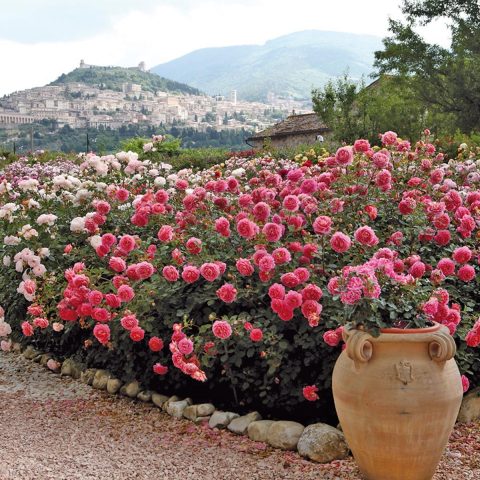
Jubilee Celebration reveals itself in full force over the years
Reproduction methods
Jubilee Celebration is propagated by cuttings. To do this, at the beginning of summer, adult rose shoots with a thickness of at least 0.5 cm are selected, cut into pieces with a disinfected pruning shears with 3-5 buds on each, the leaves are removed from below, a few pieces are left on top, planting is carried out in the prepared soil and then proper care.
Pest and disease control
Despite the fact that the Jubilee Celebration rose rarely gets sick, with poor care it can be affected by some infections and insects. To avoid infection, you should regularly inspect the crop, carry out timely watering and pruning, and also organize preventive measures. If an illness is detected, immediately take measures to eliminate it.
Application in landscape design
Austin's rose Jubilee Celebration is distinguished by its versatility. It looks great both in single and group plantings, fits perfectly into any landscape composition, performs well in cutting, and can be grown in boxes. Most often, it occupies a ceremonial place in a flowerbed and serves as a decoration for the entrance to a house or facade. It goes best with roses of other colors, as well as with the Alexandra of Kent variety.
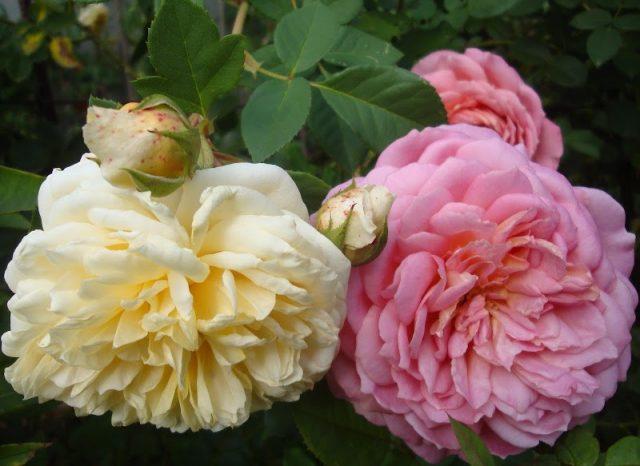
The variety looks amazing in border plantings
Conclusion
Rose Jubilee Celebration is a variety of the queen of the garden, which is rapidly gaining popularity among Russian gardeners. Many consider this variety of English flowers to be one of the most beautiful because of its gorgeous buds. If the gardener can provide the crop with the necessary care, it will thank him with lush bushes strewn with fragrant inflorescences.
Reviews of the English rose Jubilee Celebration
